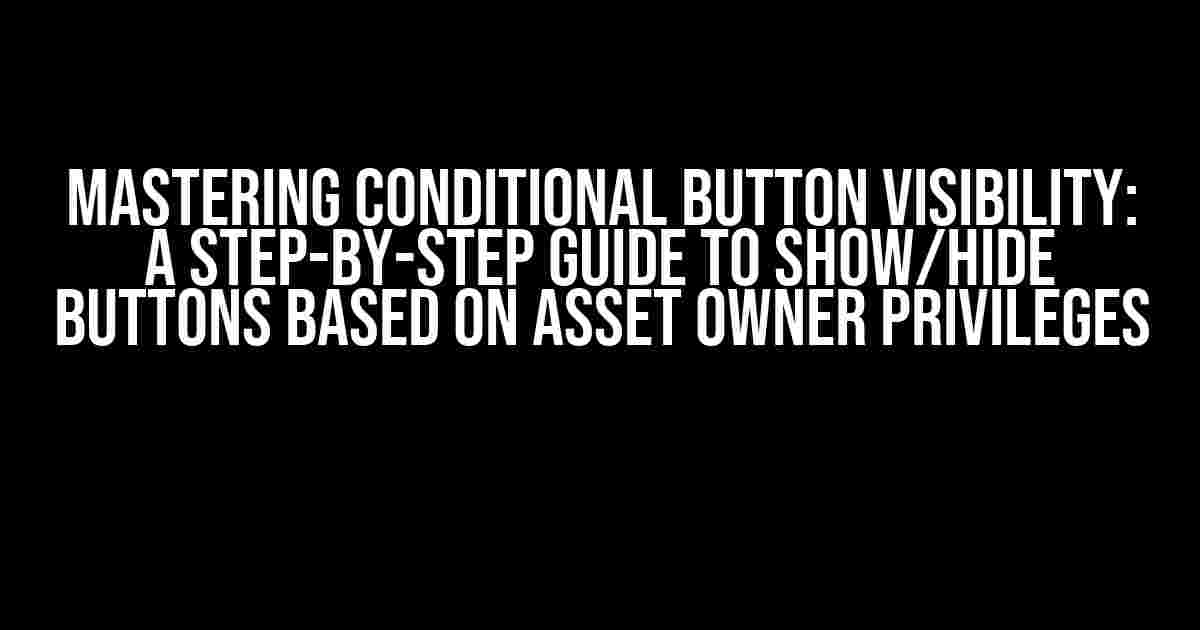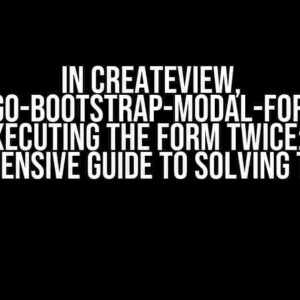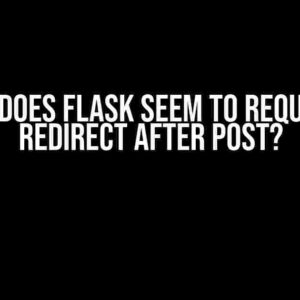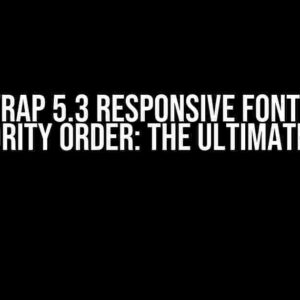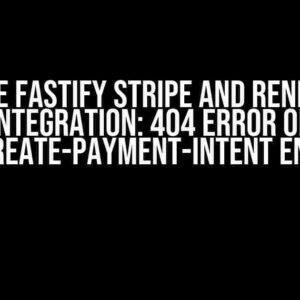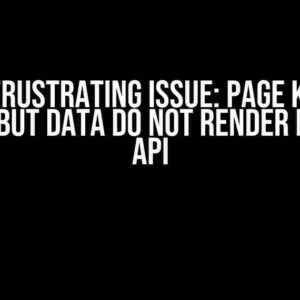As a developer, you’ve probably encountered situations where you need to dynamically show or hide a button based on specific conditions. In this comprehensive guide, we’ll delve into the world of conditional button visibility, focusing on the keyword “How to show/hide a button by comparing if logged in by asset owner check database privilege asset owner whether add asset value is ‘on’ or ‘off'”. Buckle up, and let’s get started!
Understanding the Problem Statement
In a typical asset management system, you might have multiple users with varying levels of privileges. One common requirement is to show or hide buttons based on the user’s role, particularly the asset owner’s privileges. For instance, if the asset owner’s add asset value is set to ‘on’, you might want to display a “Create New Asset” button. Conversely, if the value is ‘off’, the button should remain hidden.
Prerequisites
Before we dive into the solution, make sure you have the following setup:
- A functioning database with a table for asset owners and their respective privileges.
- A login system that authenticates users and retrieves their corresponding asset owner details.
- A web page or application where you want to display the conditional button.
Step 1: Retrieve Asset Owner Privileges from the Database
The first step is to fetch the asset owner’s privileges from the database. Assuming you have a PHP-based backend and a MySQL database, you can use the following code snippet to retrieve the data:
<?php
// Establish a database connection
$conn = mysqli_connect("localhost", "username", "password", "database");
// Check connection
if (!$conn) {
die("Connection failed: " . mysqli_connect_error());
}
// Retrieve asset owner privileges
$query = "SELECT add_asset_value FROM asset_owners WHERE id = ".$_SESSION['asset_owner_id'];
$result = mysqli_query($conn, $query);
if (mysqli_num_rows($result) > 0) {
$privileges = mysqli_fetch_assoc($result);
} else {
echo "No privileges found.";
}
// Close the database connection
mysqli_close($conn);
?>In this example, we’re using a PHP session variable (`$_SESSION[‘asset_owner_id’]`) to store the current asset owner’s ID. We then use this ID to retrieve the corresponding privileges from the database.
Step 2: Create a Conditional Statement to Show/Hide the Button
Now that we have the asset owner’s privileges, it’s time to create a conditional statement to show or hide the button. Assuming you’re using HTML and JavaScript, you can use the following code:
<script>
const addButton = document.getElementById("add-button");
if (<?php echo $privileges['add_asset_value]; ?> == 'on') {
addButton.style.display = "block";
} else {
addButton.style.display = "none";
}
</script>In this example, we’re using JavaScript to retrieve the button element (`addButton`) and then using a conditional statement to set its `display` property based on the asset owner’s `add_asset_value` privilege. If the value is ‘on’, the button is displayed; otherwise, it’s hidden.
Alternative Approach: Using a Template Engine
If you’re using a template engine like Twig or Blade, you can simplify the conditional statement using your template engine’s syntax. For instance, in Twig:
<% if privileges.add_asset_value == 'on' %>
<button id="add-button">Create New Asset</button>
<% endif %>In this example, we’re using Twig’s syntax to conditionally render the button element based on the asset owner’s privilege.
Step 3: Integrate the Solution into Your Web Page
Finally, integrate the conditional button visibility solution into your web page or application. Make sure to include the necessary JavaScript code or template engine syntax to dynamically show or hide the button.
Example HTML Code
Here’s an example HTML code snippet that demonstrates the complete solution:
<html>
<body>
<h1>Asset Management System</h1>
<div>
<?php if ($privileges['add_asset_value'] == 'on') { ?>
<button id="add-button">Create New Asset</button>
<?php } ?>
</div>
<script>
const addButton = document.getElementById("add-button");
if (<?php echo $privileges['add_asset_value']; ?> == 'on') {
addButton.style.display = "block";
} else {
addButton.style.display = "none";
}
</script>
</body>
</html>Conclusion
And that’s it! You’ve successfully created a conditional button visibility system that shows or hides a button based on the asset owner’s privileges. By following these steps and adapting the code to your specific use case, you can create a more dynamic and user-friendly experience for your asset management system.
Best Practices
- Always validate user input and ensure that the asset owner’s privileges are properly retrieved from the database.
- Use a templating engine or modular code structure to keep your code organized and maintainable.
- Consider implementing additional security measures, such as role-based access control, to further restrict access to specific features.
| Privilege Value | Button Visibility |
|---|---|
| ‘on’ | Visible |
| ‘off’ | Hidden |
By following this guide, you should now have a solid understanding of how to show or hide a button based on the asset owner’s privileges. Remember to adapt the solution to your specific use case, and happy coding!
Here are 5 Questions and Answers about “How to show/hide a button by comparing if logged by asset owner check database privilege asset owner whether add asset value is ‘on’ or ‘off'”:
Frequently Asked Question
Get the answers to your burning questions on how to show or hide a button based on asset owner privileges!
Q: How do I determine if the current user is the asset owner?
A: You can determine if the current user is the asset owner by checking the user’s ID against the asset owner’s ID in your database. You can use a query to retrieve the asset owner’s ID and compare it to the current user’s ID. If they match, then the current user is the asset owner!
Q: How do I check the add asset value in the database?
A: You can check the add asset value in the database by querying the database table that stores the asset information. Retrieve the row that corresponds to the current asset and check the value of the ‘add asset’ column. If the value is ‘on’, then the asset owner has permission to add assets!
Q: How do I show or hide the button based on the asset owner’s privileges?
A: You can use conditional statements to show or hide the button based on the asset owner’s privileges. For example, if the current user is the asset owner and the add asset value is ‘on’, then display the button. Otherwise, hide it!
Q: What programming language can I use to implement this logic?
A: You can use any programming language that interacts with your database, such as PHP, Python, JavaScript, or Ruby. Choose the language that best fits your application’s requirements!
Q: Can I use a framework or library to simplify the process?
A: Yes, you can use a framework or library to simplify the process. For example, if you’re using JavaScript, you can use a library like jQuery to interact with the DOM and show or hide the button. If you’re using PHP, you can use a framework like Laravel to simplify database interactions!

